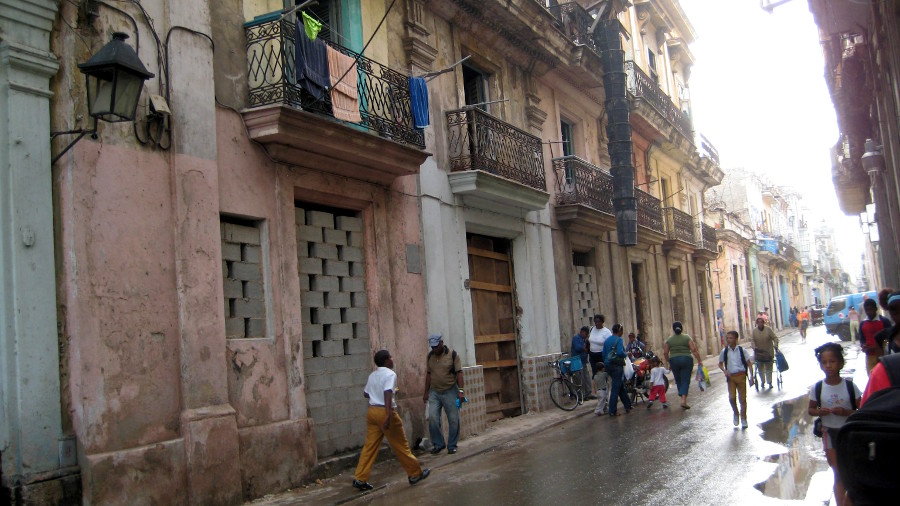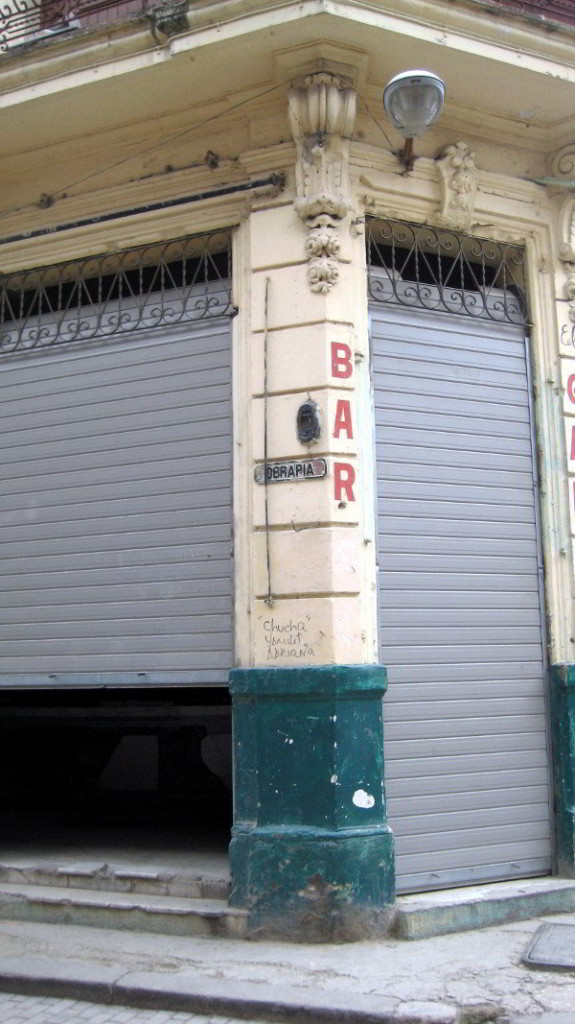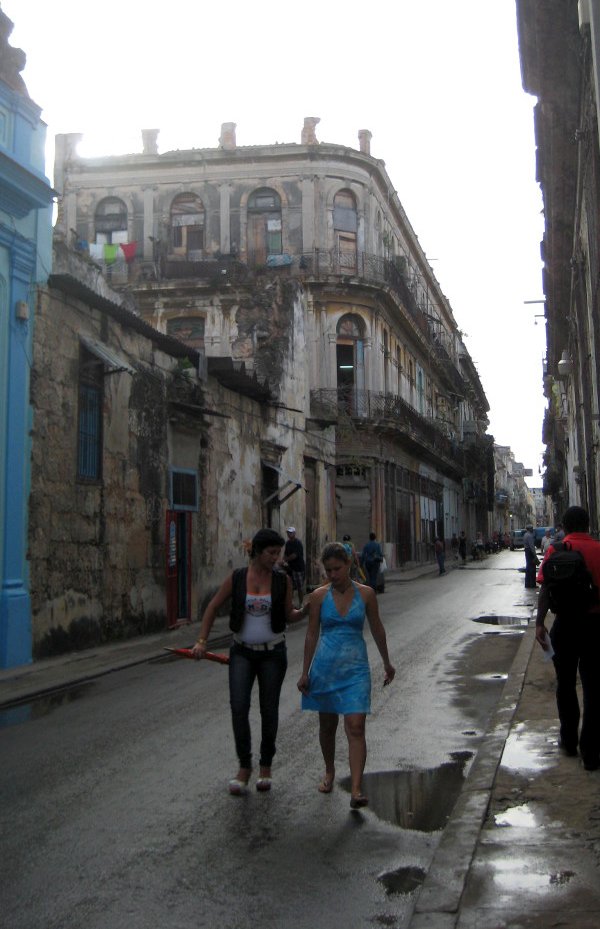Voyage to Havana part 4

While walking the streets of La Vieja Habana in my quest to retrace the steps of Mercedes Santa Cruz, the Condesa de Merlin, my friend Gerry and I found ourselves caught more than once in a tropical downpour.

One day, we were repeatedly drenched. In the former Casa of the Count de Villanueva, sheltering under the ground floor colonnade, we witnessed the rain flood the paving stones and the bedding for the plants and flowers in the central courtyard. Old Cuban houses have drains built in their courtyards to carry off the rainwater to an underground well or aljibe, but here the defenses were quickly overwhelmed. Outside, in the streets, the rain had equally engulfed everything – creating water-filled potholes and muddy paths. Havana had turned into a waterlogged world – the ground saturated and the very air weighed down by the humidity.
Picking our way down these messy streets, we tried to see a few more sites before heading back. Caught again in another cloudburst, we sheltered in a corner bar on Calle Luz. Bar might be too grand a word – an open air concrete slab with no proper door, windows or counter filled with rickety tables and plastic chairs. We were told that it was the day for the weekly rum refill, and a steady stream of customers strolled in carrying improvised containers to “top up.” No one bothered us, although along with our Habanero friend, Jorge, we must have stood out – speaking a mixture of English and Spanish (since Jorge didn’t speak English and Gerry didn’t know Spanish, I had to switch from one to the other!), and Gerry with her photographic equipment. Finally, running and splashing our way, we made it home.

Just another wet day on the research trail, yet this view of a wet and soggy Havana reminded me of the descriptions of countless travelers in the nineteenth century, from the naturalist Alexander von Humboldt to Mercedes herself, who described these very streets. Mercedes’ Cuban contemporaries criticized her for describing the languorous habits of Havana women – they would not venture out until the coolness of afternoon, they always drove out in volantes (carriages) and shopkeepers would even come out to serve them. However much Mercedes might have shaded her descriptions with exotic color, it was very likely that most women who either owned or could hire a carriage would have avoided any alternative. The streets are bad enough when we could wear cropped trousers and rubber-soled sandals; imagine the dress of the 1840s. Every decent woman would have been in long, full skirts which would have been dragged through the mud and dust. Shoes and clothes would have had to dry in the heavy humidity. Even today, walking some of the narrower streets with their sliver of sidewalk crammed against the buildings, means avoiding the puddles, carts, people, and animals that crowd every available space.
So once again, despite the distance of almost 175 years, Mercedes’ Havana jumped out at me – startling fresh and vivid. I could imagine what it must have felt like, smelled like – that soft, humid air, the noisy and colorful street life, and that overwhelming scent of humanity jostling within the confines of narrow streets caught within a walled city on the water’s edge.
Retracing Mercedes’ steps was possible – even if in my case it meant stepping in muddy puddles rather than riding in an elegant volante.
I love the way you describe everything. Makes me feel like I was there.
That’s the best compliment I could receive! Glad you felt that way!